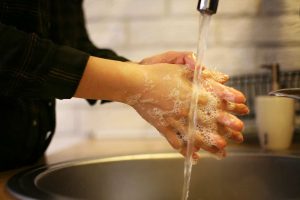Antibacterial Detergents & Superbugs: What You Should Know
In recent years, antibacterial detergents have become a popular choice for households aiming to maintain high hygiene standards. Marketed as powerful cleaners capable of killing harmful bacteria, these products are often seen as a vital defense against germs. However, the rise of “superbugs” — bacteria resistant to multiple antibiotics — has raised important questions about the long-term effectiveness and safety of antibacterial detergents. This article explores what antibacterial detergents are, how they relate to superbugs, and what consumers need to know to make informed choices.
What Are Antibacterial Detergents?
Antibacterial detergents are cleaning products formulated with chemical agents designed to kill or inhibit the growth of bacteria. These detergents are commonly used in household cleaning, laundry, and personal hygiene products such as soaps and hand washes.
Common Ingredients in Antibacterial Detergents
The active ingredients in antibacterial detergents vary but often include:
- Triclosan: Once widely used, this compound has antibacterial properties but has faced regulatory scrutiny due to environmental and health concerns.
- Triclocarban: Similar to triclosan, used in soaps and detergents but is being phased out in many regions.
- Quaternary Ammonium Compounds (Quats): Effective against a broad spectrum of bacteria and commonly found in disinfectants.
- Chlorhexidine: Often used in medical and dental applications, known for strong antibacterial effects.
Understanding Superbugs and Antibiotic Resistance
Superbugs are strains of bacteria that have developed resistance to multiple antibiotics, making infections difficult to treat. This resistance is a growing global health threat, leading to longer hospital stays, higher medical costs, and increased mortality.
How Do Superbugs Develop?
Superbugs emerge through natural selection when bacteria are exposed to antibiotics or antibacterial agents but not all are killed. The surviving bacteria mutate and pass on resistance traits to their offspring. Over time, this process results in populations of bacteria that standard treatments cannot easily eliminate.

Antibacterial Detergents & Superbugs: What You Should Know
The Role of Antibacterial Detergents in Antibiotic Resistance
While antibiotic resistance is primarily driven by the overuse and misuse of antibiotics in medicine and agriculture, antibacterial detergents also contribute to the problem. Some ingredients, particularly triclosan, have been shown to promote cross-resistance where bacteria become resistant not only to the detergent but also to certain antibiotics.
Are Antibacterial Detergents Safe and Effective?
The effectiveness and safety of antibacterial detergents depend on their formulation and usage. Here are some important considerations:
Effectiveness Against Germs
Regular detergents can remove dirt and microbes effectively through physical action and rinsing. Antibacterial detergents aim to kill bacteria rather than just remove them. However, studies have shown that for typical household cleaning, antibacterial detergents do not provide significant added benefits over standard soap and water.
Health and Environmental Concerns
Some antibacterial agents, especially triclosan, have been linked to hormonal disruption in humans and adverse environmental effects such as water contamination and harm to aquatic life. Due to these concerns, regulatory agencies like the U.S. FDA have banned triclosan and triclocarban from many consumer products.
Resistance and Microbial Imbalance
Excessive use of antibacterial products may disturb the natural balance of microbes on the skin and surfaces, potentially reducing the body’s natural defense mechanisms and fostering resistant bacteria.
How to Use Detergents Safely to Minimize Risks
To protect your health and help combat the rise of superbugs, follow these guidelines when using detergents and cleaning products:
Choose Products Wisely
- Prefer plain soap or detergents without antibacterial claims for everyday cleaning.
- Use antibacterial detergents only when necessary, such as in healthcare settings or when dealing with known contamination.
- Check product labels for banned or controversial ingredients like triclosan and avoid them.
Follow Proper Cleaning Practices
- Wash hands with regular soap and warm water for at least 20 seconds.
- Clean surfaces regularly with detergent and water; use disinfectants only on high-touch or germ-prone areas.
- Avoid overuse of antibacterial products, which can promote resistance.
Stay Informed and Advocate for Safe Products
Keep up to date on regulatory changes and scientific findings about antibacterial agents. Support brands and products committed to safety and environmental responsibility.
Conclusion: Balancing Hygiene and Antibiotic Resistance
Antibacterial detergents offer a tempting solution for killing germs, but their widespread and indiscriminate use has unintended consequences that contribute to the rise of superbugs and environmental harm. For most households, regular detergents and good hygiene practices are sufficient to maintain cleanliness and health. Understanding the science behind antibacterial products empowers consumers to make smarter choices that protect both personal health and the broader community.
By using antibacterial detergents responsibly and supporting safer alternatives, we can help slow down the threat of antibiotic resistance and ensure a healthier future.
